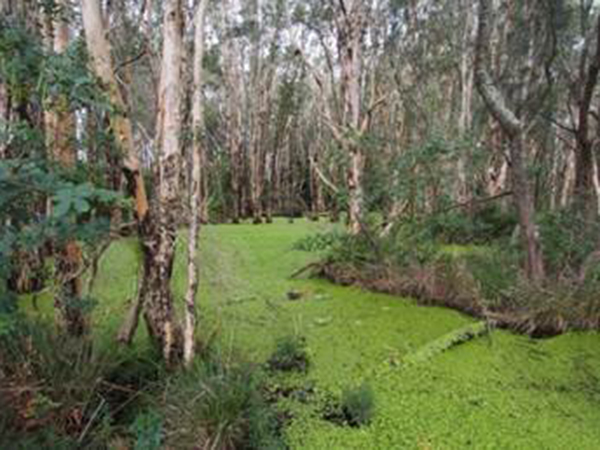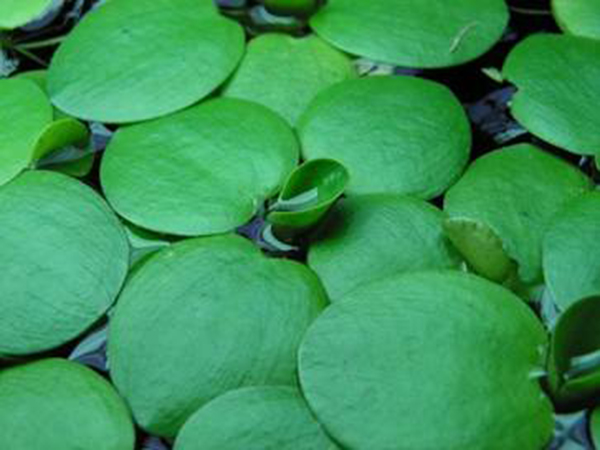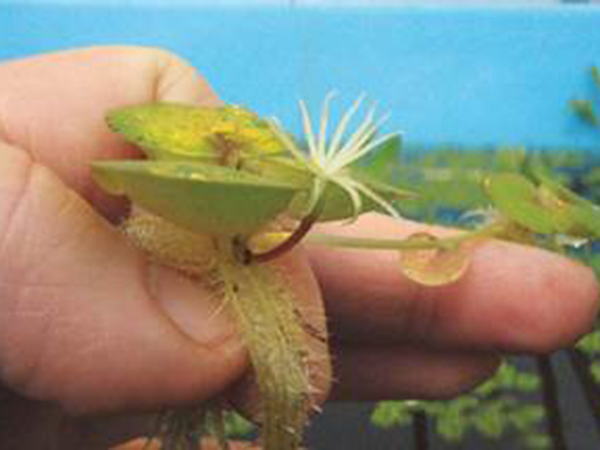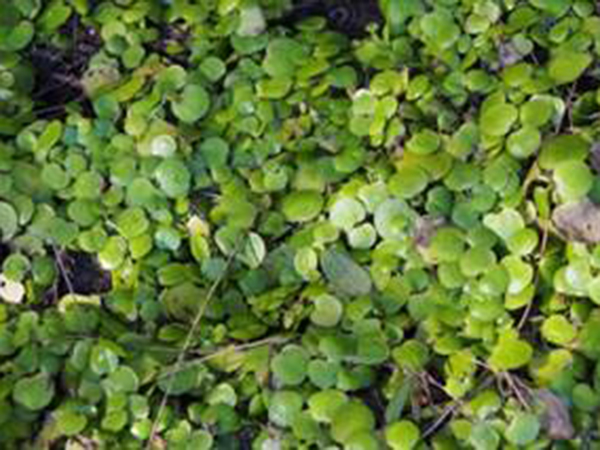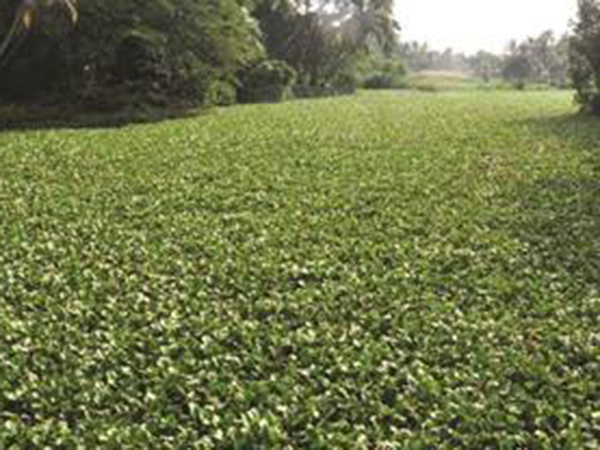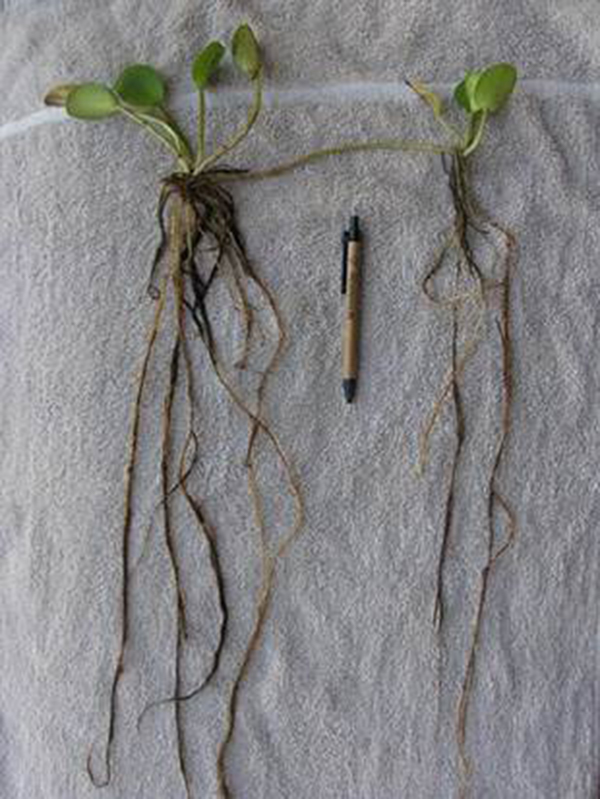Amazon frogbit
Scientific name: Limnobium laevigatum
Declaration status: Class C
Amazon frogbit originates from fresh water habitats of tropical and subtropical central and South America.
Also known as West Indian spongeplant, South American spongeplant and smooth frogbit.
For more information get the amazon frogbit weed identification fact sheet PDF (6.5 MB).
Impact
Amazon frogbit can spread rapidly through quick seed production and vegetative growth.
The small, floating seeds easily disperse via water and wind once produced.
Amazon frogbit has the potential to seriously degrade ecosystems if left untreated.
Identification
You should use this as a guide. There may be other plants or weeds that look similar.
- floating, perennial aquatic plant up to 50cm tall
- infestations can develop very quickly
- forms dense mats across waterbodies and below shading plants
- floating rosettes that send runners out into the water, the end of which form juvenile plants
- juvenile plants have an inflated stalk
- leaves are smooth, round and fleshy up to 4cm across with sponge-like sections on their undersides
- flowers are small, white and uni-sexual approximately 1.3cm in diameter
- fruit is a fleshy capsule 4 to 13mm long and 2 to 5mm in diameter
- seeds are 1mm long, ellipsoid and hairy.
If you are unsure, contact the Weed Management Branch.
The below photos are credited to: Barbara Waterhouse, NAQS Cairns.
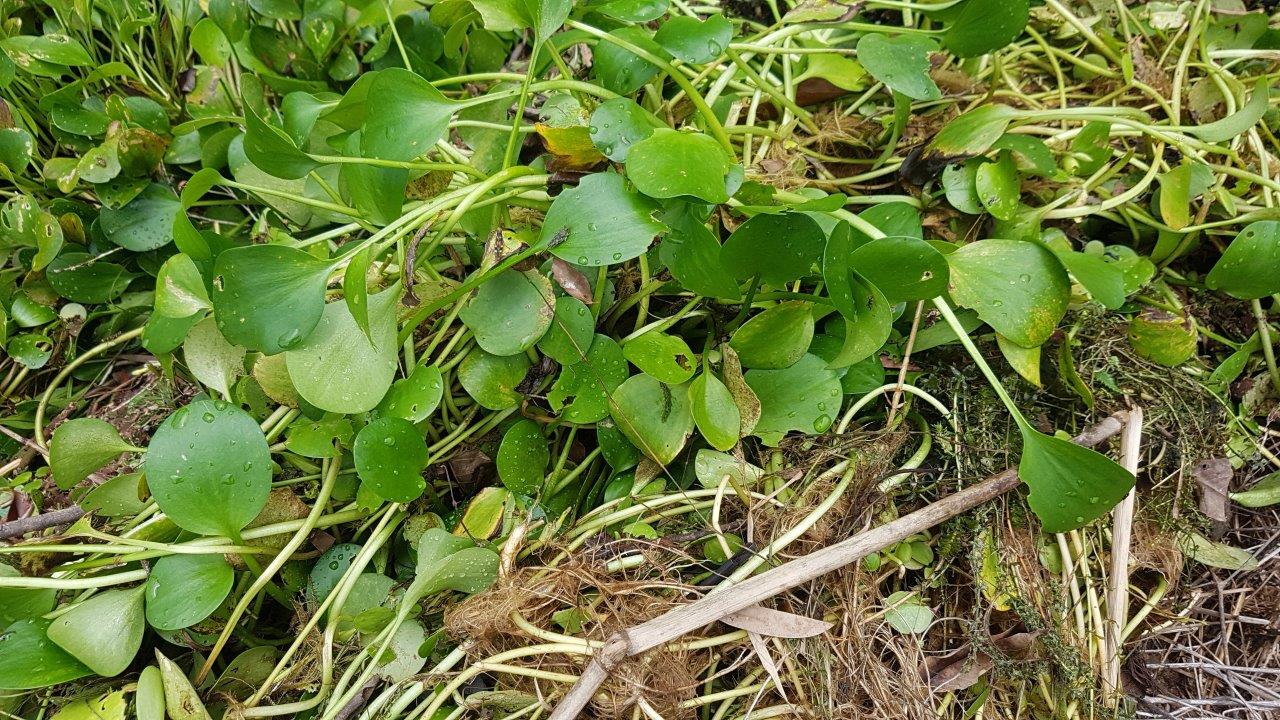
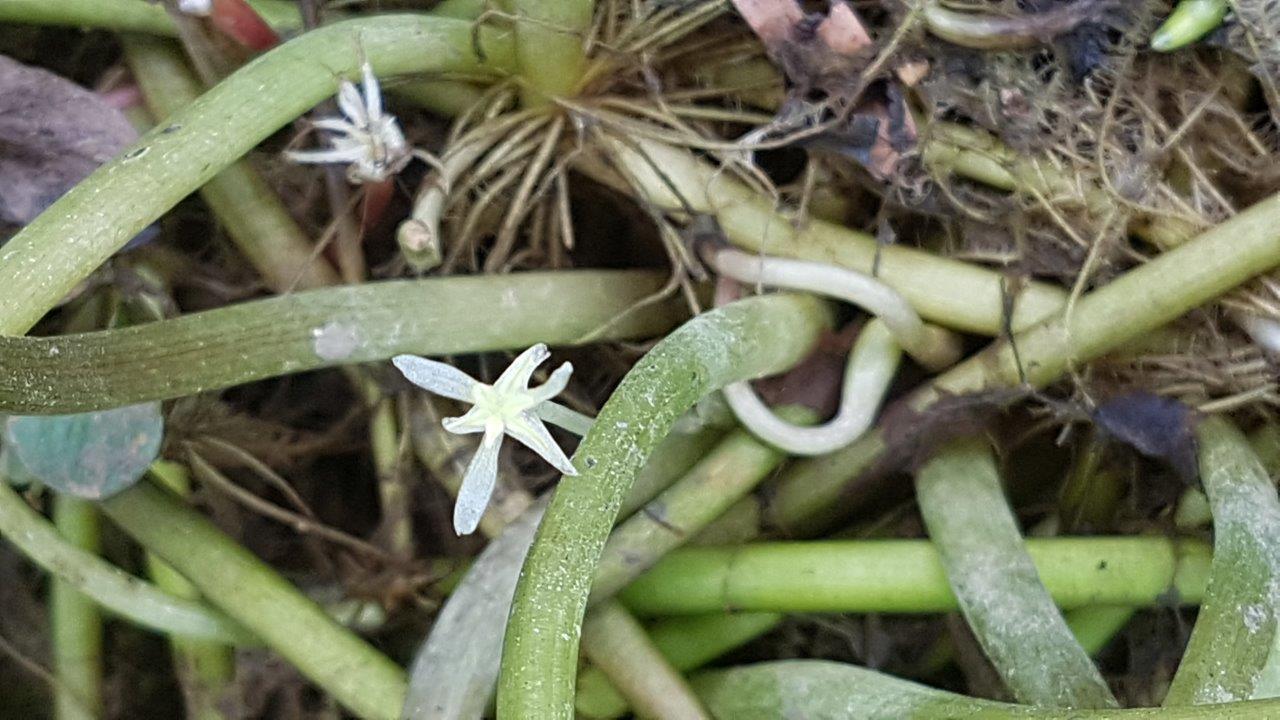

Control
If you think you may have seen Amazon frogbit, or have this weed on your property, do not attempt to control it. Contact the Weed Management Branch immediately for assistance.
Give feedback about this page.
Share this page:
URL copied!
